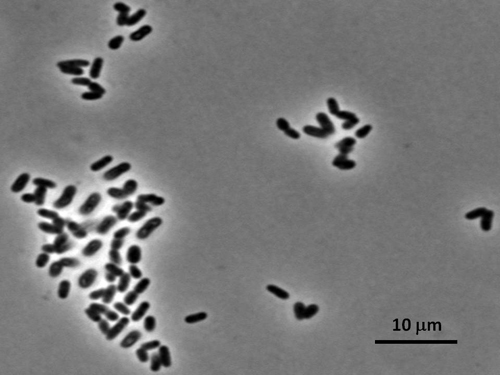Mycobacteria are known for causing human and animal diseases but they are also important degraders of hard-to-break-down water contaminants such as polyaromatic hydrocarbons (PAHs) and methyl tert-butyl ether (MTBE). So far the handful of bacterial species representing the Mycobacterium genus that have been sequenced all break down PAHs. In this project, researchers focus on the genomes of mycobacterial species isolated from soil, freshwater and marine environments that use the alkene compounds ethene and vinyl chloride as carbon sources. Chlorinated ethene compounds are difficult to remove from contaminated groundwater but necessary because of their toxicity. Additionally these compounds reduce the ozone levels in the atmosphere.

Photo: Phase-contrast light microscope image of NBB4 cells,
showing short rods arranged in clumps and V-shapes. Image by Nga Le
The sequences of these species would give researchers information about this aspect of the global carbon cycle, as well as help lead to potential applications in developing biofilters to remove hazardous organic compounds produced from burning fossil fuels to generate energy from waste streams such as exhaust gas systems. Additionally, many of the enzymes found in the mycobacterial species associated with this project could find industrial applications in fields such as biofuel production. For example, one of the compounds produced by these bacteria are environmentally-friendly starting materials for producing high-energy and high-oxygen content alcohols from alkanes.
Principal Investigators: Nicholas Coleman, University of Sydney
Program: CSP 2010